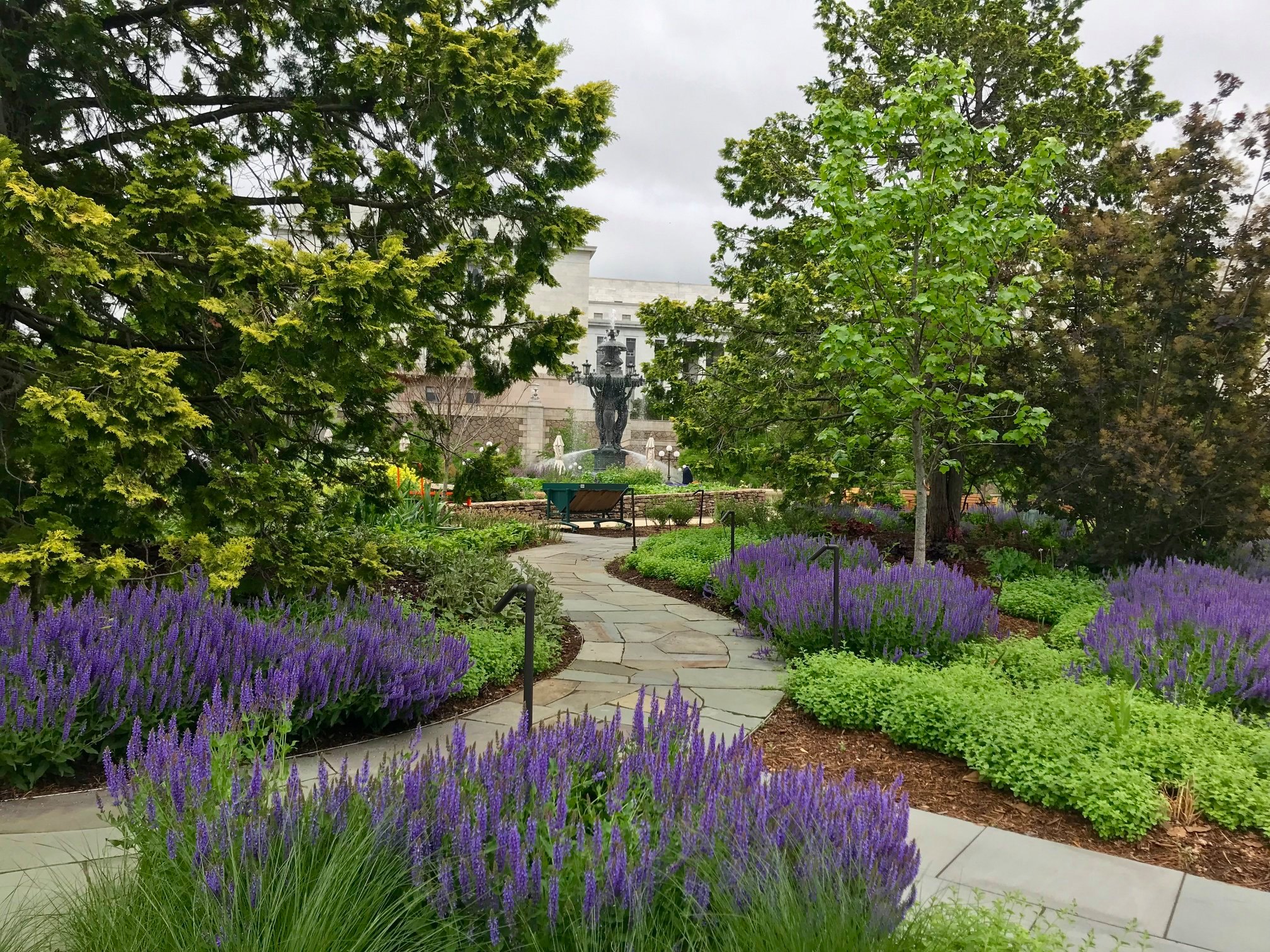Need some inspiration to get your garden going?
*Originally September 1, 2020:
You’ll find a wide array of beautiful botanical gardens among the history, science, and art museums at the National Mall. Stroll through gardens filled with everything from roses, tulips, and flowering shrubs to orchids, bonsai, and waterlilies. Whether you’re looking for inspiration, trying to boost your gardening know-how, or just want to walk in the midst of nature, keep reading to discover some great gardens in D.C.
United States Botanic Garden
100 Maryland Avenue SW / Washington, D.C. 20001
The United States Botanic Garden's indoor and outdoor gardens feature the tropics, the Mediterranean, Southwest desert plants, Hawaiian, and a reconstructed Jurassic period landscape. The rose and orchid displays are always popular. Admission is free, and there are often special exhibits, educational programs, and sculpture installations.
Enid A. Haupt Garden
1050 Independence Avenue SW / Washington, D.C. 20560
The 4.2-acre Enid A. Haupt Garden opened in 1987 and sits next to the Smithsonian “Castle” building. This modern Victorian rooftop garden is actually above the National Museum of African Art, the Arthur M. Sackler Gallery, and the S. Dillon Ripley Center.
The garden’s centerpiece, The Parterre, is a beautifully landscaped Victorian garden with symmetrical patterns and ever-changing diamond, scallop, and swag designs. Other horticultural aspects include areas designed after Moorish palaces, Islamic gardens, and a Moongate Garden inspired by the Temple of Heaven in Beijing, China.
Smithsonian Pollinator Garden
10 Constitution Avenue NW / Washington, D.C. 20050
Birds, bees, and hummingbirds flock to this 11,000-square-foot garden just outside the National Museum of Natural History. The Pollinator Garden has more than 230 flowering and fragrant trees, shrubs, and other plants designed to attract pollinators and increase pollination. It originally opened as the Butterfly Habitat Garden in 1995 and became the Pollinator Garden in 2016.
Katherine Dulin Folger Rose Garden
900 Jefferson Drive SW #922 / Washington, D.C. 20560
Located in front of the Smithsonian Arts and Industries Building, the Katherine Dulin Folger Rose Garden has been blooming since 1998. While it was originally designed as a showcase for the modern rose, there are a variety of annuals, perennials, and shrubs that help to support the relationship between plants and insects. The centerpiece of the garden, the GUR-KARMA-RANA Keith Fountain, was made in the 1800s and features three tiers of cascading water.
United States National Arboretum
3501 New York Avenue NE / Washington, D.C. 20002
Established in 1927 by an Act of Congress, the 446-acre National Arboretum is operated by the U.S. Department of Agriculture’s Agricultural Research Service. It features azaleas, dogwoods, ferns, and trees such as holly, magnolias, and bonsai. The Grove of State Trees features trees representing all 50 states and the District of Columbia. Collections include Asian plants, conifers, boxwoods, and perennials, among many others. There are 9.5 miles of trails and pathways to stroll along and enjoy a day in nature.
Kenilworth Park & Aquatic Gardens
1550 Anacostia Avenue NE / Washington, D.C. 20019
If you’re looking for a little slice of peace and tranquility in the middle of the District, Kenilworth Aquatic Gardens is where you need to be. This hidden oasis features water lilies and lotus flowers as well as red maple, poplar, and oak trees. It also has the only tidal marsh in D.C. Located near the Anacostia River, it’s home to turtles, birds, and other wildlife. Special events include music and yoga sessions.
German-American Friendship Garden
1600 Constitution Avenue NW / Washington, D.C. 20006
The German-American Friendship Garden was created as a tribute to the German-American Tricentennial and as a symbol of the positive relations between the U.S. and Germany. It was dedicated in 1988 by President Ronald Reagan and Chancellor of Germany Helmut Kohl. Native German and American plants are prominently displayed. While small (it’s about 350x60 feet), it features an assortment of textures and colors combined with a geometric planting pattern. There are a variety of ornamental grasses, small trees, and shrubs, and perennials packed into this small space. Relax on a bench with views of fountains, the Washington Monument, and the White House.
Have you been to any of the gardens at the National Mall? Which one is your favorite? Let us know in the comments.
